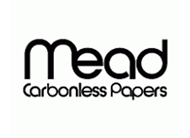1. Straight Bill of Lading: is typically used when you shipping merchandise to a customer. The "Straight Bill of Lading" is for shipping items that have already been paid for.
2. To Order Bill of Lading: Used for shipments when payment is not made in advance. This can be shipping to one of your distributors or a customer on terms.
3. Clean Bill of Lading: A Clean Bill of Lading is simply a BOL that the shipping carrier has to sign off on saying that when the packages were loaded they were in good condition. If the packages are damaged or the cargo is marred in some way (rusted metal, stained paper, etc.), they will need issue a "Soiled Bill of Landing" or a "Foul Bill of Landing."
4. Inland Bill of Lading: This allows the shipping carrier to ship cargo, by road or rail, across domestic land, but not over seas.
5. Ocean Bill of Lading: Ocean Bills of Lading allows the shipper to transport the cargo over seas, nationally or internationally.
6. Through Bill of Lading: Through Bills of Lading are a little more complex than most BOLs. It allows for the shipping carrier to pass the cargo through several different modes of transportation and/or several different distribution centers. This Bill of Landing needs to include an Inland Bill of Landing and/or an Ocean Bill of Landing depending on its final destination.
7. Multimodal/Combined Transport Bill of Lading: This is a type of Through Bill of Lading that involves a minimum of two different modes of transport, land or ocean. The modes of transportation can be anything from freight boat to air.
8. Direct Bill of Lading: Use a Direct Bill of Lading when you know the same vessel that picked up the cargo will deliver it to its final destination.
9. Stale Bill of Lading: Occasionally in cases of short-over-seas cargo transportation, the cargo arrives to port before the Bill of Landing. When that happens, the Bill of Landing is then "stale."
10. Shipped On Board Bill of Lading: A Shipped On Board Bill of Lading is issued when the cargo arrives at the port in good, expected condition from the shipping carrier and is then loaded onto the cargo ship for transport over seas.
11. Received Bill of Lading: It is simply a Bill of Lading stating that the cargo has arrived at the port and is cleared to be loaded on the ship, but has not necessary mean it has been loaded. Used as a temporary BOL when a ship is late and will be replaced by a Shipped On Board Bill of Lading when the ship arrives and the cargo is loaded.
12. Claused Bill of Lading: If the cargo is damaged or there are missing quantities, a Claused Bill of Landing is issued.
look over our preprinted BOL with your compeny info, we can also customized the form to you needs.
Looking for a way to combine your custom Bill of Lading and Shipping Label on the same sheet? Check out our Integrated Forms sheets!




















